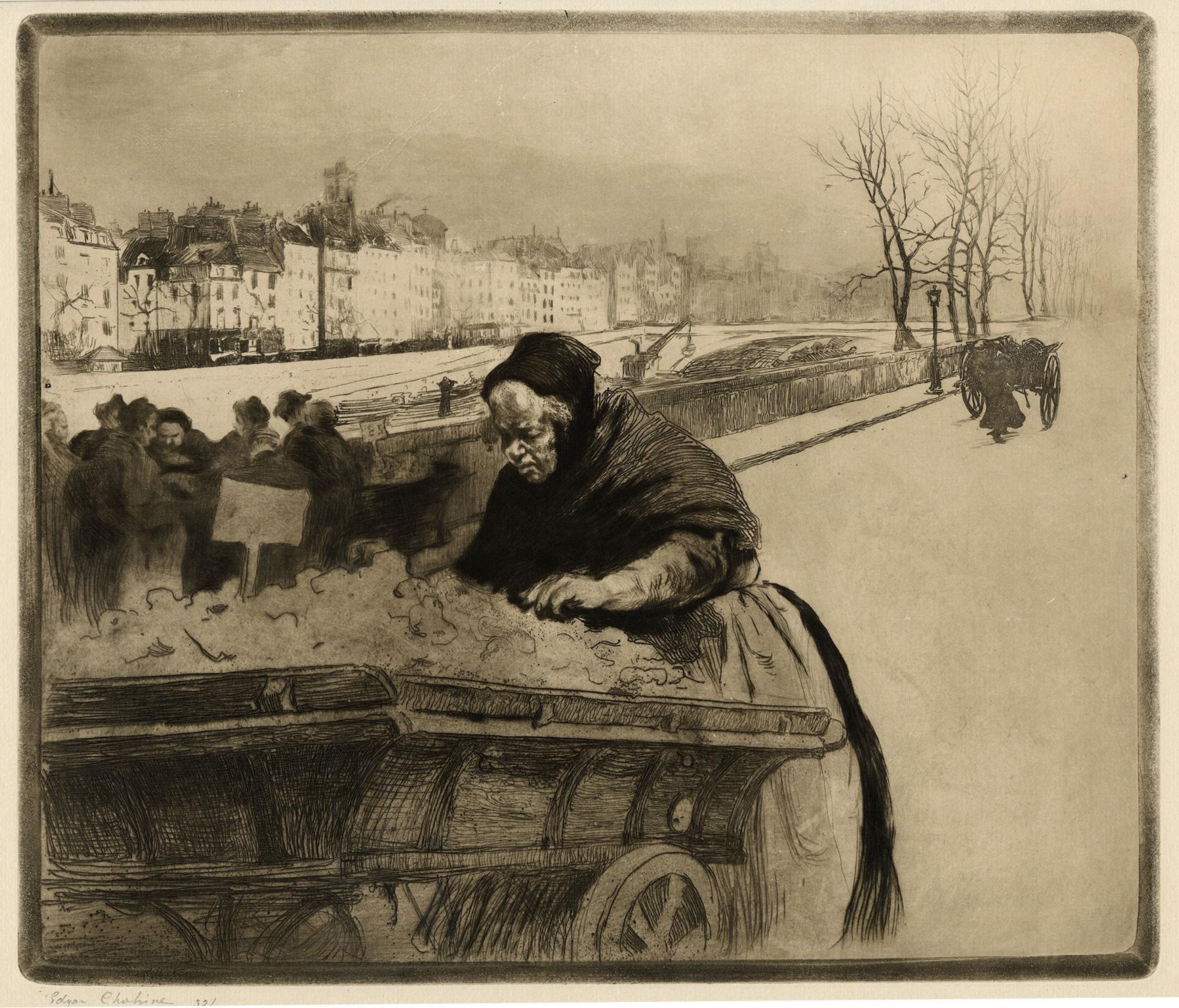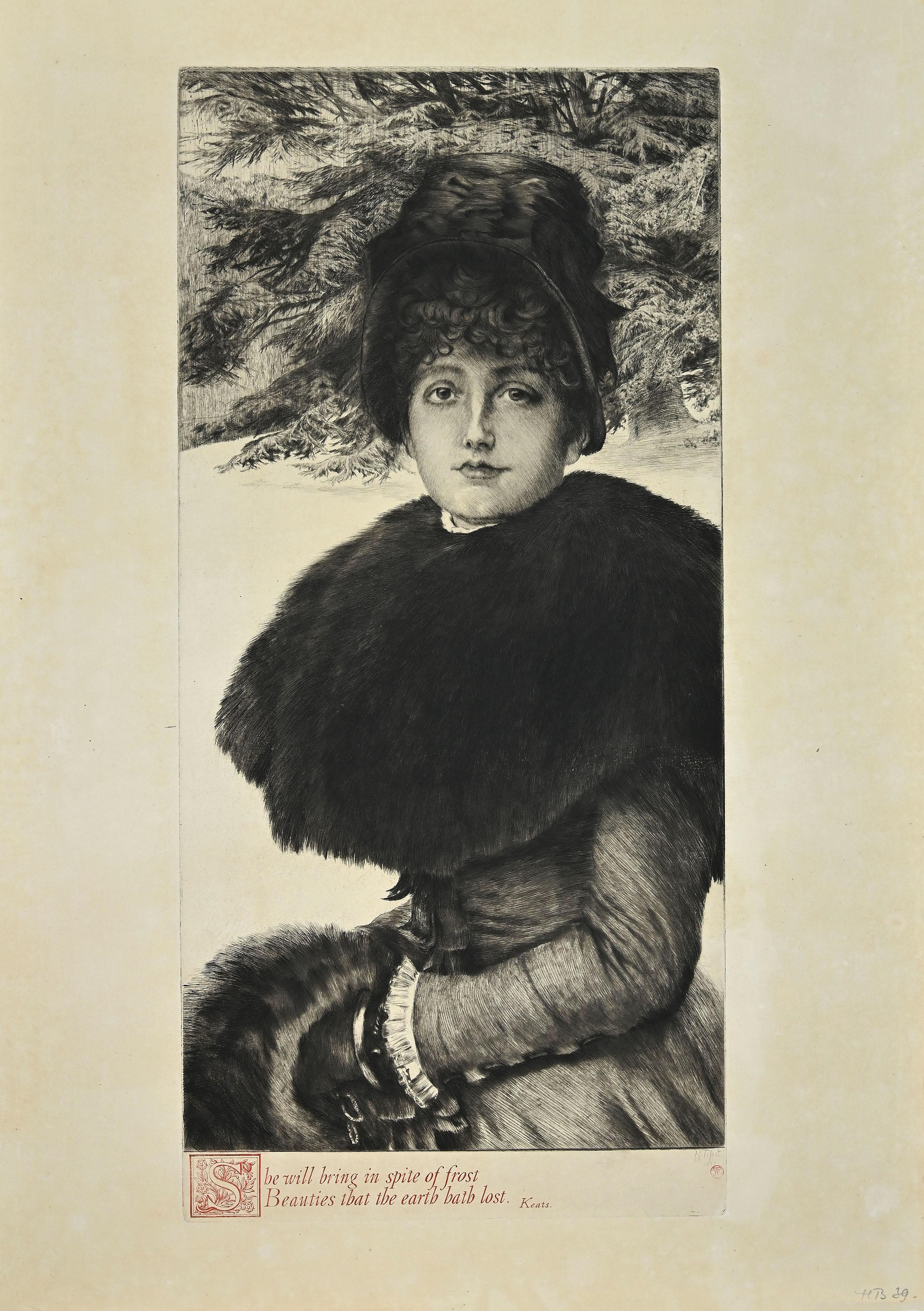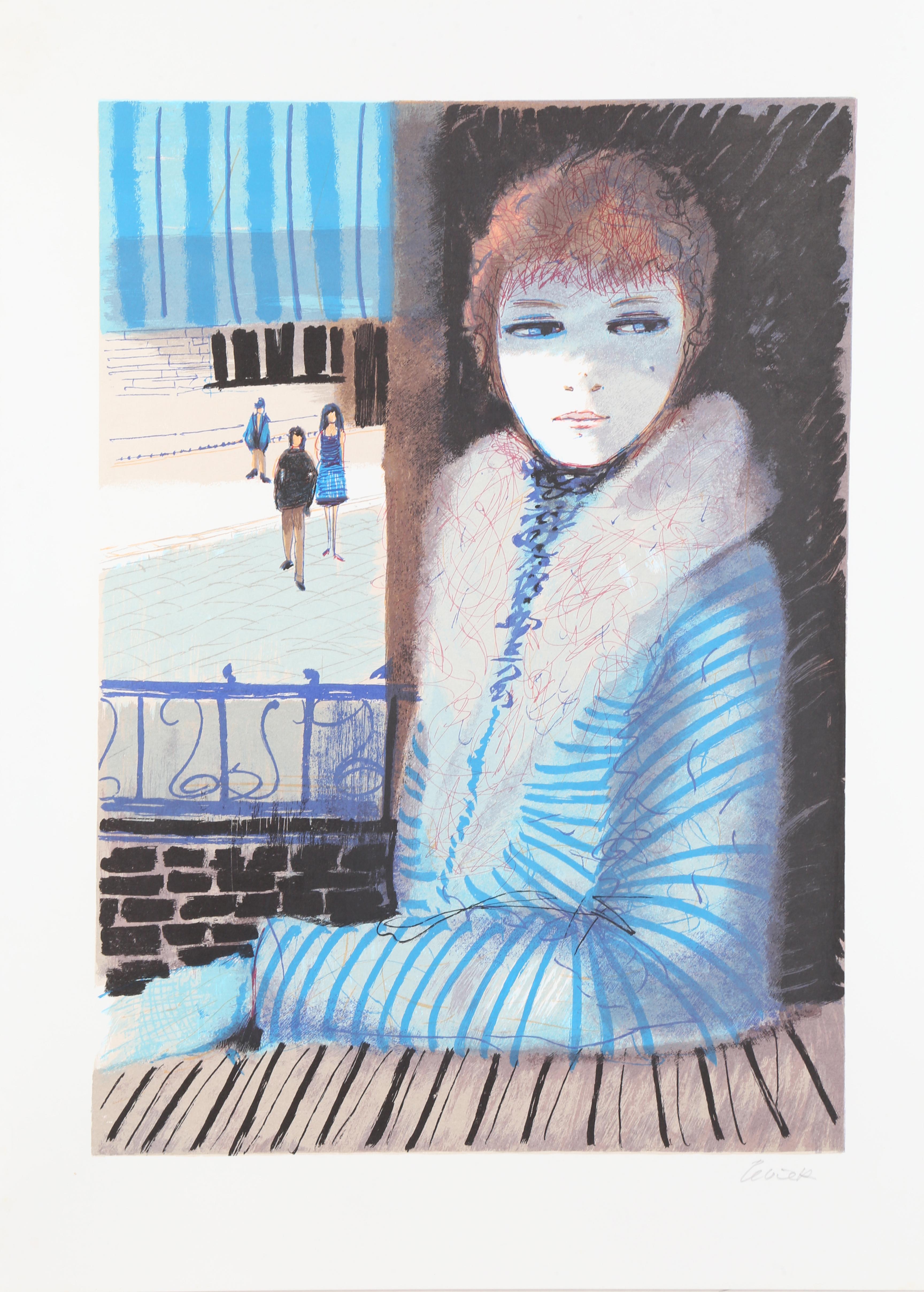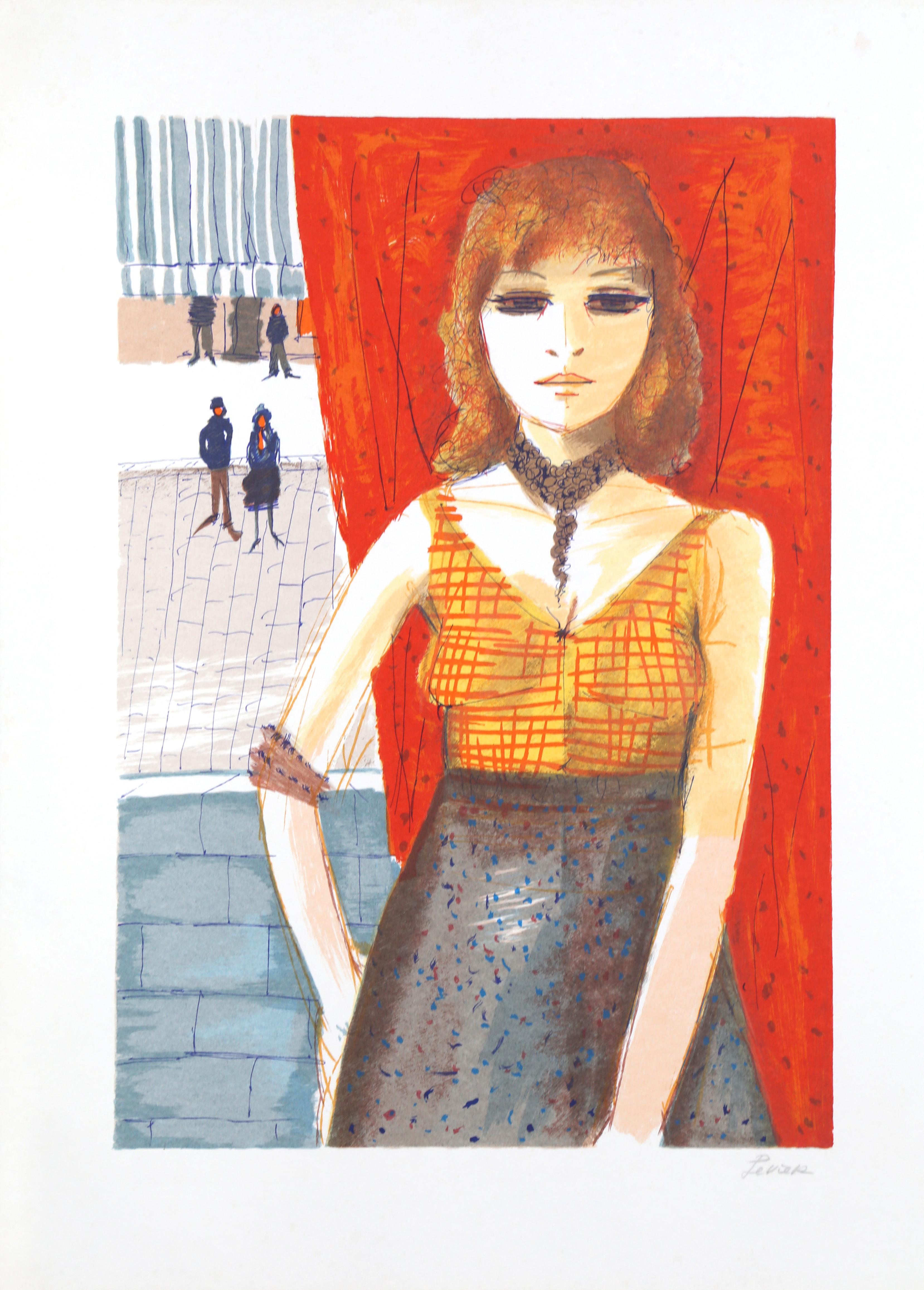Henri Matisse"Mlle Landsberg" (grade planche, pl. 16)1914
1914
About the Item
- Creator:Henri Matisse (1869-1954, French)
- Creation Year:1914
- Dimensions:Height: 7.875 in (20.01 cm)Width: 4.313 in (10.96 cm)
- Medium:
- Movement & Style:
- Period:
- Condition:
- Gallery Location:Missouri, MO
- Reference Number:1stDibs: LU747313487572
Henri Matisse
Whether working as a draftsman, a sculptor, a printmaker or a painter, Henri Matisse was a master of color. Although classically trained at the Académie Julian, in Paris, he quickly abandoned traditional techniques and genres to pioneer a style all his own, marked by quick, gestural strokes and fluid contours.
Along with fellow painter André Derain, Matisse was the leading proponent of Fauvism, a movement whose name is derived from the French word for "wild beast.” Marked by vibrant hues, Fauvist paintings like Matisse’s famous 1906 composition Le Bonheur de vivre use wild, active brushstrokes and a palette unconstrained by nature, resulting in women with purple skin and trees with orange leaves. Often, these compositions unite pure color with the white of exposed canvas to create a sense of transparency and light.
In addition to masterful landscapes and still lifes, Matisse loved to paint erotic subjects, particularly the female nude. Rejecting strict realism, he distilled the form into its essential parts and then translated these into voluptuous, rounded contours. With its striking colors and sculptural modeling of the figure, Odalisque couchée aux magnolias is among Matisse’s most famous works — and the most expensive work of his ever sold — depicting Henriette Darricarrère, his muse and favorite model for around seven years, lounging luxuriously in his Nice studio. In pictures like the lithograph Nu Bleu, he explored the expressive power of a body in motion by placing his figures in twisted or contorted poses, transforming their limbs into tangles of color and shape that push figure painting toward abstraction.
Find original Henri Matisse prints, sculptures and other art on 1stDibs.
- ShippingRetrieving quote...Ships From: Missouri, MO
- Return PolicyA return for this item may be initiated within 2 days of delivery.
- RembrandtBy Salvador DalíLocated in Missouri, MORembrandt Salvador Dali (Spanish, 1904-1989) Signed Lower Right "E.A." (Artist Edition) Lower Left 12 x 10 inches 23.25 x 19.25 inches with frame Salvador Dali was born in May 11, 1...Category
20th Century Modern Portrait Prints
MaterialsEtching
- The Hymn SingerBy Thomas Hart BentonLocated in Missouri, MOSigned in Pencil Lower Right Ed. 500 Circulated by Twayne Publishers, New York City Image Size: 16 x 12 3/8 Framed Size: 24 1/4 x 20 1/2 inches The legendary actor actor and musici...Category
1950s American Realist Portrait Prints
MaterialsLithograph
- Joies de BretagneBy (after) Paul GauguinLocated in Missouri, MOPaul Gauguin (1848-1903) Joies de Bretagne (Kornfeld 7 B) zincograph, 1889, on simili Japon paper, from the second edition of circa 50 impressions, published by Ambroise Vollard afte...Category
Early 1900s Fauvist Figurative Prints
MaterialsLithograph
- Moa-Na-Hon-Ga, Great Walker, An Ioway ChiefBy McKenney & HallLocated in Missouri, MOMOA-NA-HON-GA. GREAT WALKER. AN IOWAY CHIEF., from History of the Indian Tribes of North America Artist:Charles Bird King Publisher:McKenney and Hall hand-colored engraving on paper ...Category
1830s American Realist Portrait Prints
MaterialsEngraving
- BostonBy John William HillLocated in Missouri, MOJohn William Hill (1812-1879) "Boston" 1857 Hand-Colored Engraving Site Size: 29 x 41 inches Framed Size: 39 x 52 inches Born in London, England, John William Hill came to America with his family at age 7. His father, John Hill, was a well-known landscape painter, engraver, and aquatintist. John William had a career of two phases, a city topographer-engraver and then, the leading pre-Rafaelite school painter in this country. Employed by the New York Geological Survey and then by Smith Brothers...Category
1850s Pre-Raphaelite Landscape Prints
MaterialsAquatint, Engraving
- Don JuanBy Louis IcartLocated in Missouri, MOAquating Engraving Image Size: approx. 20 1/4 x 13 3/8 Framed Size: 28 x 20.5 inches Pencil Signed Lower Right Louis Justin Laurent Icart was born in Toulouse in 1890 and died in Paris in 1950. He lived in New York City in the 1920s, where he became known for his Art-Deco color etchings of glamourous women. He was first son of Jean and Elisabeth Icart and was officially named Louis Justin Laurent Icart. The use of his initials L.I. would be sufficient in this household. Therefore, from the moment of his birth he was dubbed 'Helli'. The Icart family lived modestly in a small brick home on rue Traversière-de-la-balance, in the culturally rich Southern French city of Toulouse, which was the home of many prominent writers and artists, the most famous being Henri de Toulouse-Lautrec. Icart entered the l'Ecole Superieure de Commerce de Toulouse in order to continue his studies for a career in business, particularly banking (his father's profession). However, he soon discovered the play writings of Victor Hugo (1802-1885), which were to change the course of his life. Icart borrowed whatever books he could find by Hugo at the Toulouse library, devouring the tales, rich in both romantic imagery and the dilemmas of the human condition. It was through Icart's love of the theater that he developed a taste for all the arts, though the urge to paint was not as yet as strong for him as the urge to act. It was not until his move to Paris in 1907 that Icart would concentrate on painting, drawing and the production of countless beautiful etchings, which have served (more than the other mediums) to indelibly preserve his name in twentieth century art history. Art Deco, a term coined at the 1925 Paris Exposition des Arts Decoratifs, had taken its grip on the Paris of the 1920s. By the late 1920s Icart, working for both publications and major fashion and design studios, had become very successful, both artistically and financially. His etchings reached their height of brilliance in this era of Art Deco, and Icart had become the symbol of the epoch. Yet, although Icart has created for us a picture of Paris and New York life in the 1920s and 1930s, he worked in his own style, derived principally from the study of eighteenth-century French masters such as Jean Antoine Watteau, François Boucher and Jean Honoré Fragonard. In Icart's drawings, one sees the Impressionists Degas...Category
1920s Art Deco Figurative Prints
MaterialsEngraving, Aquatint
- La Marchande des Quatres-SaisonsBy Edgar ChahineLocated in Middletown, NYEtching with drypoint on cream wove paper, 11 3/4 x 13 3/4 inches (297 x 347 mm), full margins. Signed in pencil and numbered 32/40, lower margin. Minor mat tone and several small lo...Category
Early 20th Century Post-Impressionist Portrait Prints
MaterialsHandmade Paper, Rag Paper, Drypoint, Etching
- Promenade dans la Neige - Etching by J. Tissot - 1880By James TissotLocated in Roma, ITBeautiful print on verge crème, 2° state on 3, with letters printed in red. Stamp “Lugt 1545”. Little crack and fold on lower left margin of the sheet. Some small traces of oxidati...Category
1880s Post-Impressionist Portrait Prints
MaterialsDrypoint, Etching
- Untitled from Les Lettres PortugaisesBy Henri MatisseLocated in Washington, DCArtist: Henri Matisse Medium: lithograph Portfolio: Untitled from Les Lettres Portugaises Year: 1946 Edition: 250 Framed Size: 16 3/4" x 14 1/2" Reference: Duthuit 15 Signed: UnsignedCategory
1940s Fauvist Portrait Prints
MaterialsLithograph
- Girl in Blue, Lithograph by Charles LevierBy Charles LevierLocated in Long Island City, NYGirl in Blue Charles Levier, French (1920–2003) Date: circa 1970 Lithograph, signed in pencil l.r. Edition of 250 Image Size: 24 x 17 inches Size: 30 x 22 in. (76.2 x 55.88 cm)Category
1970s Fauvist Figurative Prints
MaterialsLithograph
- Red Head, Lithograph by Charles LevierBy Charles LevierLocated in Long Island City, NYRed Head Charles Levier, French (1920–2003) Date: circa 1970 Lithograph, signed and numbered in pencil Edition of 250 Image Size: 24 x 16 inches Size: 30 x 22 in. (76.2 x 55.88 cm)Category
1970s Fauvist Figurative Prints
MaterialsLithograph
- Jeunesse Dorée (Kathleen Nancy Woodward). (Gilded Youth.)By Gerald Leslie BrockhurstLocated in Storrs, CTJeunesse Doree. Fletcher 80. 10 7/8 x 8 7/8. Edition 75 in this state (there was also 1 trial and 4 proofs in state I; 2 trials and 2 proofs in state II; and 2 proofs of state 3, p...Category
1940s Modern Portrait Prints
MaterialsEtching, Drypoint






